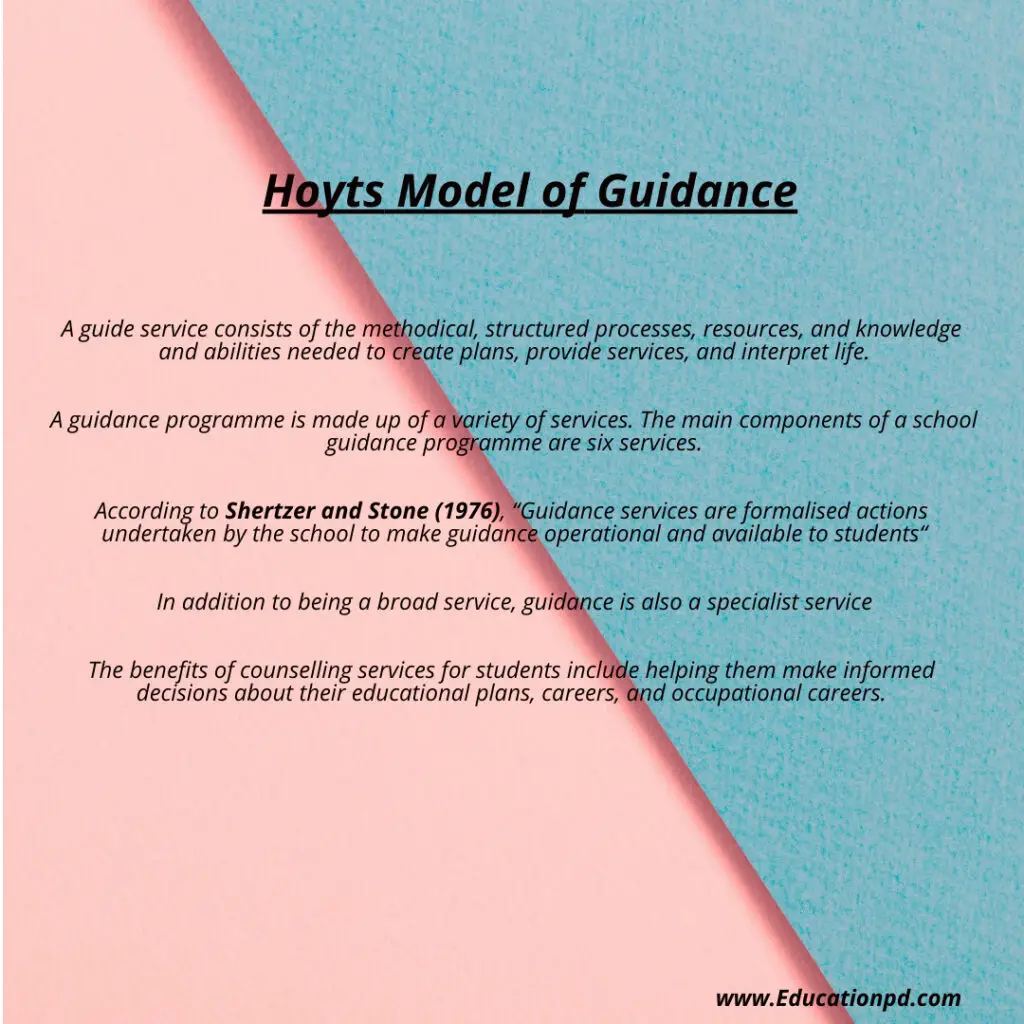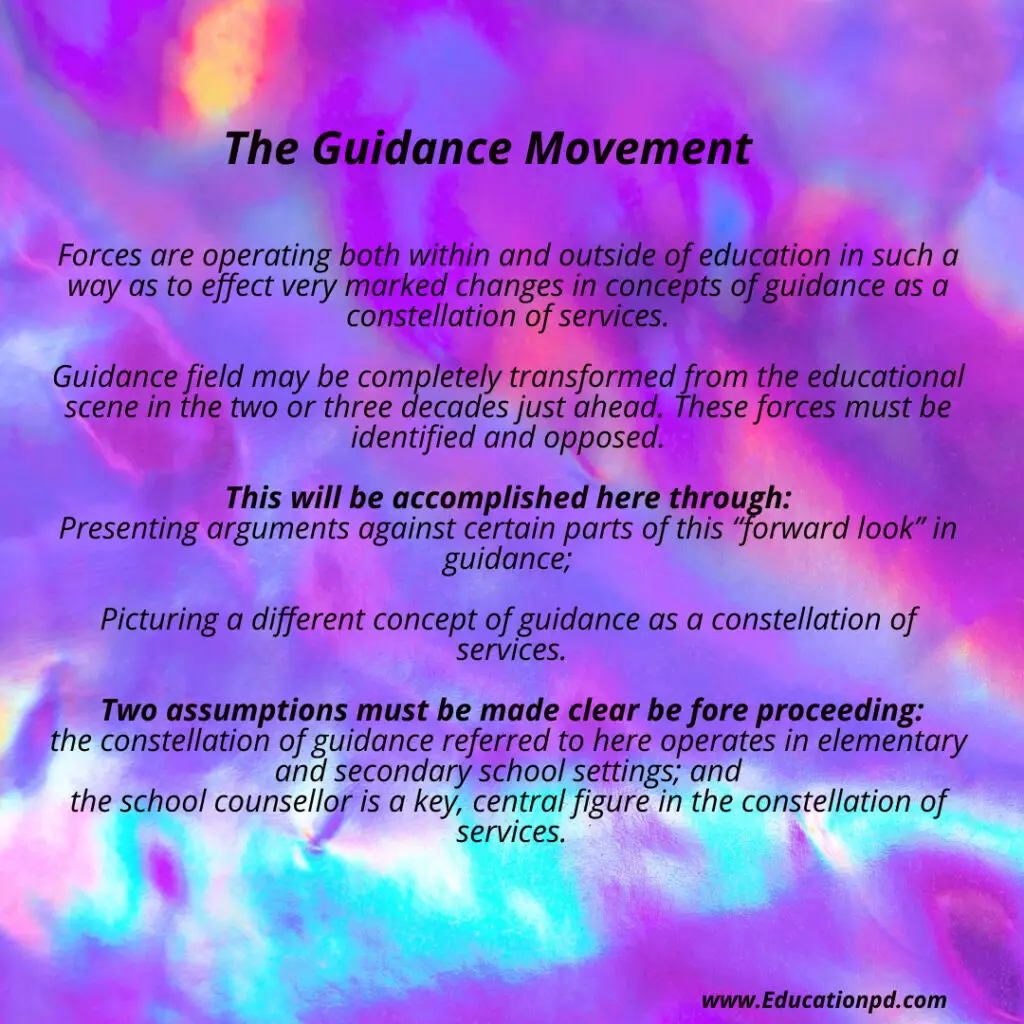Back to: Guidance and Counselling in Education B.ed Notes, M.A Notes, IGNOU Notes
Hoyts Model of Guidance
- A guide service consists of the methodical, structured processes, resources, and knowledge and abilities needed to create plans, provide services, and interpret life.
- A guidance programme is made up of a variety of services. The main components of a school guidance programme are six services. They are placement, counselling, occupational information, student inventory, orientation, and follow-up services. Due to their varied purposes, each of these services is unique.
- According to Shertzer and Stone (1976), “Guidance services are formalised actions undertaken by the school to make guidance operational and available to students“
- In addition to being a broad service, guidance is also a specialist service. In various settings and contexts, specifically certified and trained individuals such as counsellors, psychologists, and psychiatrists perform the guiding work with the goal of resolving the difficulties of the kid.
- The benefits of counselling services for students include helping them make informed decisions about their educational plans, careers, and occupational careers. The ability to adapt successfully to various social contexts, such as those at school and at work, is beneficial to pupils.

The Guidance Movement
- Forces are operating both within and outside of education in such a way as to effect very marked changes in concepts of guidance as a constellation of services.
- Guidance field may be completely transformed from the educational scene in the two or three decades just ahead. These forces must be identified and opposed.
This will be accomplished here through:
- Describing guidance as a constellation of services as it might exist several years from now if the urgings of certain leaders in student personnel work are followed;
- Presenting arguments against certain parts of this “forward look” in guidance;
- Picturing a different concept of guidance as a constellation of services.
Two assumptions must be made clear be fore proceeding:
- the constellation of guidance referred to here operates in elementary and secondary school settings; and
- the school counsellor is a key, central figure in the constellation of services.

A Plan for Changing Concepts of Guidance in Education
- Following completion of this task, the school counsellor will be required to develop his major connections with other student personnel staff members inside the school rather than with lecturers and school officials.
- Once this is finished, the school’s strong staff of pupil personnel specialists can handle the students’ personnel needs, freeing up classroom instructors and school administrators for administrative tasks.
- The needs of pupils which is formerly classified as “guidance needs” will no longer have to concern teachers or administrators directly.
- With this kind of orientation, one may wonder why the school counsellor, who is a member of the specialised pupil personnel team and is distinct from the teachers and administrators, should be required to hold a teaching certificate or have successfully demonstrated teaching experience; after all, having a teaching certificate is a fundamental component of the profession.
- It’s likely that having teaching experience might cause counselling habits that are detrimental to effective counsellor education.
